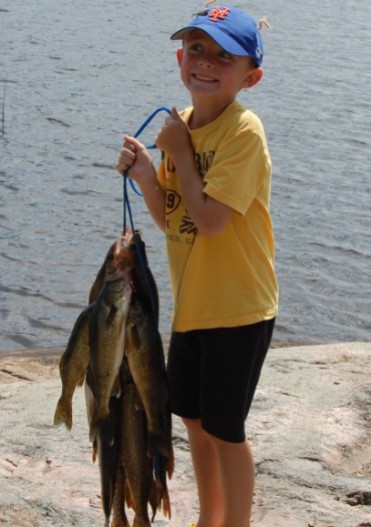 One of the biggest keys to finding late spring/early summer walleye on major lake is the presence of perch & we have lots of perch; especially smaller young-of-the-year ones. Walleye will key strongly on this perch forage throughout most of the season. Newly emerging weeds are amongst the strongest locations to find schools of small 3 to 4 inch perch. Find new weed beds on top of bars or in bays or even along flats and you’re bound to find both perch and walleye.
One of the biggest keys to finding late spring/early summer walleye on major lake is the presence of perch & we have lots of perch; especially smaller young-of-the-year ones. Walleye will key strongly on this perch forage throughout most of the season. Newly emerging weeds are amongst the strongest locations to find schools of small 3 to 4 inch perch. Find new weed beds on top of bars or in bays or even along flats and you’re bound to find both perch and walleye.
You’re bound to find the best weed growth initially along northern sections of any given body of water simply because they get more sunlight. Bays and cuts, protected from wind and wave action, which allows the water temps inside these spots to crank up far above that of the main lake, are apt to be the first spots to hold good weed growth and perch concentrations. In fact, the combination of warmer water and weeds is a sure winner in the early season.
Eventually, adjacent points outside warm bays with shallow tops will be the next hotspot, and seem to peak about the time that bays peter out. Mid lake spots with a shallow top and the right bottom content should be next in line to produce fresh new weed growth and attract a school of bite-sized perch. Sometimes, these mid lake spots will produce all summer long. And finally, southern locations that support weeds will sprout growth much later on.
The best way to find these weeds initially is to simply idle along a potential spot with a keen eye on your depth finder, as well as a periodic look over the side of the boat. If you spot short weed growth on your depth finder, or better yet, see weeds by peering into the water, throw out a marker buoy for a reference point. Then, let the area settle down for a few minutes while you set up to fish it. Of course, polarized sunglasses will further aid you in visual detection of the best weed clumps.
The best way to check weeds for walleyes initially is with a jig. use a simple jig baited with a plastic grub, but sometimes you might have to bait that jig with a minnow or leech in order to trigger finicky fish. Keep the jig light weight so it lands on top the weeds and doesn’t plummet into them. A 1/8 ounce version is most commonly used, although some like a 1/16 ouncer even better in real shallow weeds of 6 feet of water or less. Also, unless the walleye are running larger, above 20 inches, the smaller two inch grub tail is a better producer than the more commonly used three inch version.
 Once you find and catch a walleye or two, the next approach is to pinpoint their precise location, and still fish the spot with slip bobber rigs. The advantage of slip bobber fishing at this point is it tends to disturb the area a lot less; resulting in a more prolonged bite – more fish caught before they spook. In other words, you’re apt to spook the fish after jigging a spot for a while since you’re going to tear up weeds. Also, the jig presentation is a more horizontal style that moves a bait in and out of the walleye’s lair quicker. That works on the hot fish, but not the spooky, less aggressive ones.
Once you find and catch a walleye or two, the next approach is to pinpoint their precise location, and still fish the spot with slip bobber rigs. The advantage of slip bobber fishing at this point is it tends to disturb the area a lot less; resulting in a more prolonged bite – more fish caught before they spook. In other words, you’re apt to spook the fish after jigging a spot for a while since you’re going to tear up weeds. Also, the jig presentation is a more horizontal style that moves a bait in and out of the walleye’s lair quicker. That works on the hot fish, but not the spooky, less aggressive ones.
Once you notice a drop off in your action, stop jigging the spot, and “break out the bobs”; the slip bobs that is. Set your offering to hover inches above the weed tops, or alongside weed walls. Bait it up with a leech (or minnow) and pitch it into a likely spot. Check various spots along that weed patch until you score. Also, try experimenting with a variety of depth settings on your “slip bob” rigs until you find the magic depth number. Duplicate that, and you should be able to take a lot more fish from that weed patch before they quit all together.
CHECK OUT OUR ‘HUNTING BLOG’: ON TARGET






